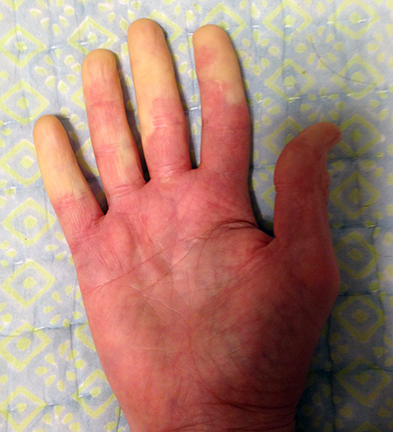
While there is currently no definitive overall treatment for scleroderma, specific treatments can often relieve symptoms and improve functioning. This section of the Scleroderma FAQ focuses on treatments targeting specific symptoms of systemic scleroderma. Note that the drugs used for overall treatment of scleroderma discussed earlier in this document often have specific beneficial effects on some of these symptoms.
Raynaud’s Phenomenon and Digital Ulcers
When it comes to Scleroderma symptoms, Raynaud’s phenomenon is almost universal with systemic scleroderma, although with diffuse Scleroderma other symptoms may develop before Raynaud’s. Prevention is very important — patients should dress warmly and limit outdoor activities in cold weather. If it is possible, it may make sense for patients in cold climates to move to a warmer climate! (However, the reduction of Raynaud’s attacks that may result from moving to a warmer climate does not appear to alter the overall progression of the disease.)
Medications to Treat Raynaud’s
Over time, severe Raynaud’s can lead to digital ulcers, which are open sores on the hands or feet, that can be very painful and difficult to heal. Medications that are used to treat Raynaud’s by relaxing blood vessels and improving blood flow also helps to prevent the development of digital ulcers. A number of medications can be prescribed to reduce Raynaud’s symptoms, including calcium channel blockers such as nifedipine (Procardia). Table 4 below lists many of the drugs commonly used to treat Raynaud’s and digital ulcers.
Table 4: Common Drug Treatments for Raynaud’s and Digital Ulceration
Type of Drug |
Generic Name (Brand Name) |
Side Effects |
Notes |
|---|---|---|---|
| Calcium Channel Blockers (Relaxes blood vessels and reduces blood pressure) |
Nifedipine (Procardia,Adalat) Amlodipine (Norvasc) Verapamil (Calan) Diltiazem (Cardizem) Felodipine (Plendil) | Generally well tolerated. Dizziness, headache, constipation, flushing, rapid heartbeat, nausea, swelling of feet/lower legs. | Can reduce lower esophageal sphincter (LES) pressure and can make reflux (heartburn) worse. Reduces duration, frequency, and severity of Raynaud’s attacks. Improves digital ulcer healing. “Gold Standard” for Raynaud’s drug treatments. |
| Phosphodiesterase Type 5 (PDE5) inhibitors (Improves blood flow) |
Sildenafil (Viagra) Tadalafil (Cialis) Vardenafil (Levitra) |
Headache, dizziness, flushing, upper GI pain, nasal congestion. | (Normally used for erectile dysfunction.) Reduces duration, frequency, and severity of Raynaud’s attacks. Improves digital ulcer healing. May be an effective add-on therapy to calcium channel blockers. Patients using nitrates in any forms cannot take PDE5 inhibitors. |
| Endothelin Receptor Antagonists (Reduces blood vessel constriction) |
Bosentan (Tracleer) Macitentan (Opsumit) |
Serious, including potential liver damage. Can cause serious birth defects if taken during pregnancy. | Reduces development of new digital ulcers, appears useful for treatment of pulmonary arterial hypertension. Not for use by women able to get pregnant unless using two forms of contraception. |
| Angiotensin II Receptor Antagonists (Blocks narrowing of blood vessels) |
Losartan (Cozaar) Valsartan (Diovan) Olmesartan (Benicar) |
Generally well tolerated. Headache, cough, fever/sore throat, dizziness, back and leg pain, diarrhea. | Limited studies as to effectiveness vs. calcium channel blockers. |
| Prostacyclin Analogs (Relaxes blood vessels) |
Iloprost (Ventavis) Epoprostenol (Flolan) Treprostinil (Remodulin) |
Only IV form appears to be effective. Usually used for severe cases only. Reduces duration, frequency, and severity of Raynaud’s attacks. Improves digital ulcer healing. |
|
| Topical Nitroglycerine | (Nitro Bid) MQX-503 |
Decreased blood pressure, dizziness, slows heartbeat. | Reduces severity but not duration or frequency of Raynaud’s attacks. Does not reduce new digital ulcer frequency. Drug interactions with many medications including calcium channel blockers and PDE5 inhibitors. |
Non-Drug Approaches to Treating Raynaud’s and Digital Ulceration
- When Raynaud’s symptoms and digital ulceration become severe, a surgical option called digital sympathectomy is sometimes used to reduce these symptoms. This procedure, performed by an expert hand surgeon, cuts the tiny nerves that constrict the blood vessels in the hands and removes scar tissue around the blood vessels. Research shows long term benefit is mixed although there is often significant improvement immediately following surgery. This procedure can reduce the likelihood of Raynaud’s progressing to the point where gangrene develops and digital amputations may be required.
- Hyperbaric chambers were originally developed to treat divers suffering from decompression sickness (the bends) from rising to sea level too rapidly to remove gas bubbles from the blood stream. Patients in a hyperbaric chamber inhale pure oxygen while lying in the pressurized chamber. Recent preliminary studies have shown that hyperbaric chambers appear to help healing of foot ulcers in patients with diabetes by promoting development of new blood vessels. There are now also anecdotal reports indicating that hyperbaric chambers may also be helpful for digital ulcers that occur with severe Raynaud’s, although controlled studies are lacking at this point.
- Recent studies have looked at treating skin ulcerations using stem cells extracted from the patient’s own fat cells. While the positive results are preliminary, this may be a way to help treat digital ulcerations resulting from severe chronic Raynaud’s.
- A recent review poster on the use of therapeutic plasma exchange (TPE) to treat Raynaud’s and digital ulcers in systemic scleroderma (Harris et al. 2016) noted that several studies have indicated that a small number of TPE treatments, typically three or four weekly treatments, eliminates or significantly reduces Raynaud’s symptoms and also leads to long-lasting healing of digital ulcers.
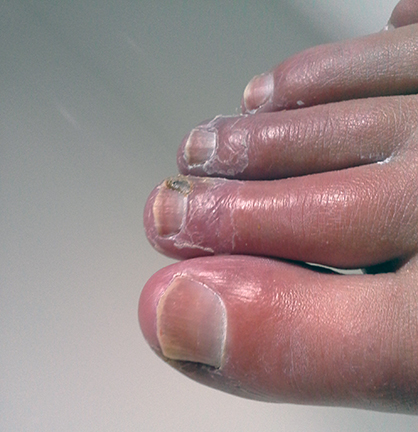 Skin Changes (Fibrosis)
Skin Changes (Fibrosis)
Many medications have been tried for reducing skin thickening and for delaying internal organ involvement. D-penicillamine and methotrexate (see Table 3) appear to have some limited effectiveness in improving skin thickening, as well as improved 5-year survival rates. However, both medications can have serious side effects, and patients need to be monitored closely when using these drugs. Both can cause serious birth defects, and women who could potentially become pregnant need to use two forms of birth control to prevent pregnancy.
While cyclosporine may have some limited effect on skin fibrosis, its potential for major kidney problems general precludes its use with scleroderma. A newer medication, imatinib mesylate (Gleevec), normally used as an anti-cancer drug, showed some promise in early studies as a potential anti-fibrosis drug, but a recent well-designed double-blind controlled study failed to confirm any benefit.
Steroids such as prednisone do not appear to be effective in most subtypes of systemic scleroderma but may be more appropriate for scleroderma overlap syndromes which include more arthritic symptoms such as muscle weakness and pain.
Dryness of the skin may be reduced by frequent use of lubricating creams. Regular exercise can help to maintain flexibility of joints and pliability of skin.
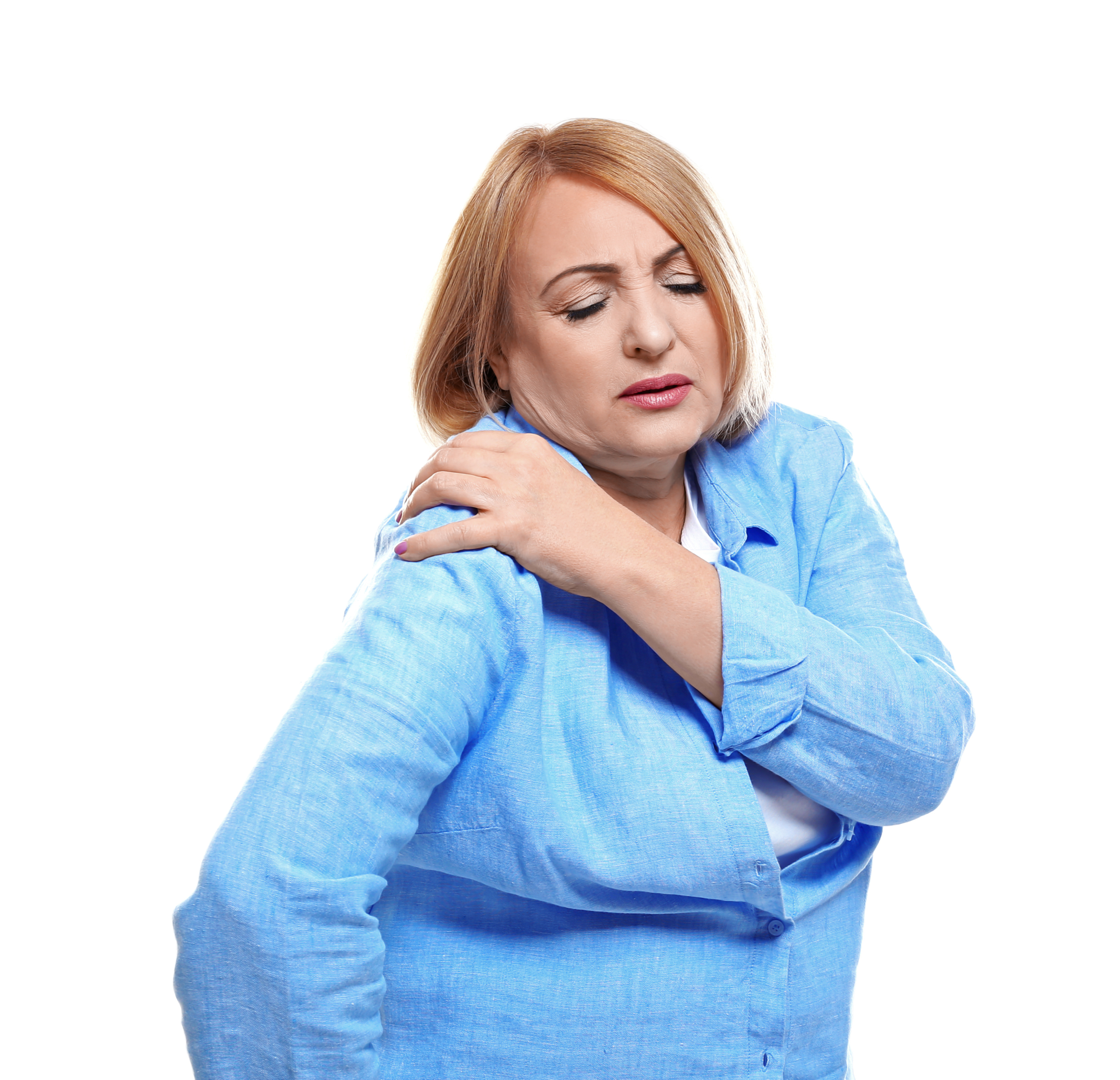 Musculoskeletal (Muscles and Joints)
Musculoskeletal (Muscles and Joints)
Joint and tendon related pain is more common with some of the subtypes of scleroderma than others (see Table 2). These symptoms are usually helped by nonsteroidal anti-inflammatory drugs (NSAIDS), but relief is usually more difficult to achieve than in other auto-immune disorders. Celebrex, a COX-2 inhibitor, is sometimes used instead of an NSAID. Note that some studies suggest that using an NSAID or a COX-2 inhibitor can reduce the effectiveness of ACE inhibitors, which are used to treat kidney problems. In some cases, low-dose corticosteroids such as prednisone, may be necessary to control musculoskeletal pain.
A number of small studies have demonstrated that regular exercise with an emphasis on stretching and range of motion can be beneficial in helping improve joint motion in scleroderma patients. Patients should work with occupational or physical therapists in developing suitable exercise programs for their individual condition and limitations.
Pulmonary (Lungs)
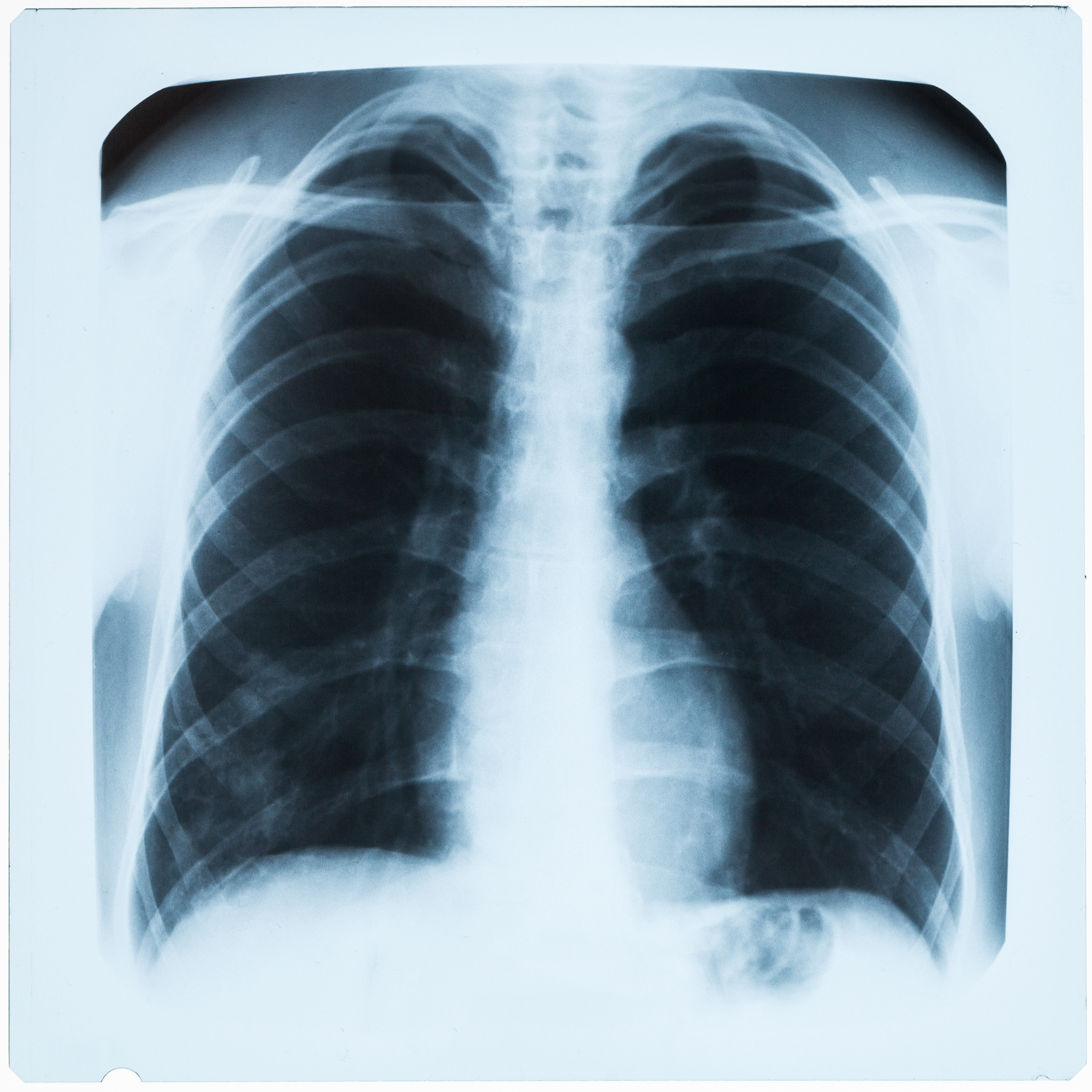 As was discussed earlier in this document, there are two different lung complications that are associated with scleroderma – interstitial lung disease (ILD) and pulmonary artery hypertension (PAH). These conditions are correlated to some extent with specific scleroderma antibody subtypes (see Table 2).
As was discussed earlier in this document, there are two different lung complications that are associated with scleroderma – interstitial lung disease (ILD) and pulmonary artery hypertension (PAH). These conditions are correlated to some extent with specific scleroderma antibody subtypes (see Table 2).
Most patients with lung involvement have a mild, non-progressive course that does not require treatment. However, when serious lung complications develop, they can be difficult to treat and are a leading cause of death. This makes it very important to do regular screening for lung complications.
Some of the systemic medications, such as immunosuppressant drugs, used for treating scleroderma are targeting either ILD or PAH. Table 3 above lists a number of medications that target lung related complications. Medications that mostly help with Raynaud’s symptoms, such as calcium channel blockers (e.g., nifedipine), prostacyclin analogs (e.g., iliprost), endothelin receptor antagonists (e.g., bosetan), and PDE5 inhibitors (e.g., sildenafil), are thought to be helpful for PAH as well.
In October 2013, the FDA approved two new drugs for treatment of PAH: macitentan (Opsumit), an endothelin receptor antagonist, and riociguat (Adempas), a new class of drug called a guanylate cyclase (sGC) stimulator that works by relaxing blood vessels. Both drugs are generally well tolerated with relatively minor side effects.
Pulmonary infections require prompt treatment with antibiotics. Supplemental oxygen may also be needed. With advanced lung fibrosis or pulmonary hypertension, the only option may be a single or double lung transplant, sometimes including a heart transplant if heart problems are also severe.
Gastrointestinal
 As was discussed earlier, there can be several different gastrointestinal tract symptoms with systemic scleroderma. Treatment approaches to these various symptoms are discussed below:
As was discussed earlier, there can be several different gastrointestinal tract symptoms with systemic scleroderma. Treatment approaches to these various symptoms are discussed below:
- Heartburn (Reflux) / Acid Indigestion – Treatment for heartburn caused by scleroderma is no different from treatment of heartburn caused by other issues. Heartburn develops in scleroderma patients because the lower esophageal sphincter (LES) muscle that separates the esophagus from the stomach does not work normally, allowing acid from the stomach to flow back up into the esophagus, causing pain and, over a prolonged period, damage to the esophagus that can lead to Barrett’s Esophagus, a pre-cancerous condition. In addition to the pain of heartburn and the potential for direct damage to the esophagus, recent research suggests that minor quantities of stomach acid can be inhaled into the lungs, thereby increasing fibrosis problems.Some foods are known to aggravate reflux symptoms, but their effects vary widely on an individual basis. These include fatty foods, coffee, alcohol, mint, and chocolate. Eating smaller meals, avoiding eating late at night, sleeping on the left side, and elevating the head of the bed are simple measures that can reduce heartburn symptoms, especially at bedtime.In addition to the direct effects of scleroderma on the lower esophageal sphincter, there are also many drugs that can reduce LES pressure and, thus, make heartburn even worse. Unfortunately, the most common type of drugs that reduce LES pressure are calcium channel blockers such as nifidepine (Procardia), which are also the most effective drugs for treating Raynaud’s symptoms.Here is a partial list of classes of drugs that can reduce LES pressure and thereby potentially worsen heartburn symptoms. It is important to discuss the tradeoffs of using or not using these drugs with your clinicians:
- Calcium channel blockers – used to treat blood pressure and Raynaud’s. Examples include nifedipine (Procardia), amlodipine (Norvasc) and many others. However, it is worth noting that some calcium channel blockers appear to reduce LES pressure more than others. For example, nifedipine causes a very significant drop in LES pressure when studied in healthy volunteers, Verapamil (Calan, Verelan) causes a moderate reduction in LES pressure; and diltiazem (Cardizem, Dilacor) showed almost no drop in LES pressure in one study. Since this study was done with healthy volunteers rather than scleroderma patients, the study results may not be applicable for these patients. However, it does suggest that it may be worthwhile for some patients to try switching to a different calcium channel blocker if they are having a lot of reflux symptoms when taking nifedipine, in particular.
- Beta-Blockers – used to treat high blood pressure, glaucoma, and migraines. There are many drugs in this class. Some examples include metoprolol (Lopressor), propranolol (Inderal), atenolol (Temormin) and many others.
- Alpha blockers – used to treat a variety of conditions, such as high blood pressure, benign prostatic hyperplasia, and Raynaud’s. Examples include alfuzosin (Uroxatral), doxazosin (Cardura), tamsulosin (Flomax) and others.
- Nitrates – used to treat angina and Raynauds. Examples include isosorbide dinitrate (Dilatrate) and nitroclycerin (Nitro-Dur)
- Anticholinergics – used to treat a variety of disorders, e.g., asthma, depression, and sleep disorders. Examples include propantheline (ProBanthine), oxybutynin (Ditropan), imipramine (Tofranil ), tolterodine (Detrol) and MANY others.
- Theophylline – used to treat asthma and COPD. Examples include elixophyllin (TheoCap), norphyl (Theochron), and others.
- Iron supplements – used to treat anemia.
- Other classes of drugs that reduce LES pressure include morphine, meperidine, benzodiazepines, and barbiturates.
There are also a few drugs that increaseLES pressure and can potentially be tried to help control reflux symptoms:
-
- Bethanechol (Urecholine) – normally used to treat urinary problems by helping to empty the bladder.
- Buspirone (Buspar) – anti-anxiety drug that is generally well tolerated with few serious side effects.
Drug treatments for reflux usually start with antacids that work by neutralizing excess stomach acid. These are considered very safe and can be used in conjunction with other, stronger drug treatment approaches to reducing reflux symptoms. Typical brand names are Maalox, Mylanta, Gaviscon, Rolaids, and Tums, as well as generic equivalents.
The second, stronger class of acid-reducing drugs is called H2 blockers. These reduce stomach acid for several hours but take 30 to 90 minutes to work. They are often taken preventatively before meals and at bedtime. These are generally well tolerated with minor side effects such as headache. Examples include Pepcid, Zantac, Tagamet, and Axid and their generic equivalents.
The strongest class of standard drugs used to treat reflux is called proton pump inhibitors (PPIs). These drugs inhibit stomach acid production for much longer than H2 blockers and are taken daily. Generally, PPIs are very effective for reducing stomach acid and reflux. They are usually well tolerated with few side effects. Many scleroderma patients need to be on relatively high doses of PPIs on a long-term basis to help keep reflux symptoms under control. There are concerns that long-term usage of PPIs can lead to increased risk of osteoporosis, and PPIs can interact with some classes of drugs, but for scleroderma patients with significant reflux symptoms the long-term risks are probably a reasonable trade-off considering the effectiveness of PPIs to treat reflux symptoms. However, a recent study showing that PPIs can potentially cause methotrexate toxicity requires close monitoring for patients who are using PPIs and concurrently taking methotrexate. This problem does not seem to occur when using H2 blockers.
Also, long-term use of PPIs has been linked to increased likelihood of bone fractures, pneumonia, C. difficile infection, and vitamin B12 deficiency. Since PPIs are the most effective standard drug treatment for reflux disease, their usage must be weighed against possible side effects. However, in the case of severe reflux disease, for most patients the benefits in using PPIs to treat reflux symptoms probably outweigh the risks. But it is also important to be aware of these potential side effects and monitor for these side effects, especially one like vitamin B12 deficiency, which can be easily monitored and corrected with vitamin supplements.
In addition to drug treatments for reflux, in severe cases anti-reflux surgery is used to tighten the lower esophageal sphincter. There are several different surgical approaches that are used, and several new surgical approaches are currently in trial. The “gold standard” surgical approach is laparoscopic Nissen fundoplication in which the upper curve of the stomach is wrapped around the esophagus and sewn into place to strengthen the lower esophageal sphincter. An alternative approach that is less invasive is the Stretta procedure, which uses radio frequency energy to tighten the lower esophageal sphincter. These procedures are done in a hospital setting and, for best results, should be done by gastroenterologists who have performed many of these procedures. Recently (2012), the FDA approved a system called LINX™ for treatment of GERD. The LINX system consists of a series of titanium beads, each with a magnetic core, connected with titanium wires to form a ring shape. The LINX device restricts the flow of stomach contents back into the esophagus, but when the patient swallows, the pressure in the esophagus increases, and the magnetic beads move apart on the titanium wires, allowing food and liquids to pass normally into the stomach. Once the food has moved past the esophagus, the magnetic beads return to the closed position, reducing reflux symptoms. Research on this device is generally positive, but it may not be suitable for patients with difficulty swallowing because of reduced peristaltic action (sequential contraction of esophageal muscles that moves food to the stomach).
- Difficulty swallowing (dysphagia) – this symptom occurs because the tissues of the esophagus become less flexible, and the normal muscle contractions that propel food from the mouth to the stomach do not work as well (esophageal hypomotility). This is normally a side effect of the reflux problem since the continuous cycle of damage and healing causes scarring of the esophageal tissues. It can also cause the esophagus to become narrower. Getting the reflux symptoms under control is very important to help reduce swallowing problems.The most common treatment for this condition is called dilation. In this treatment, a device is placed down the esophagus to carefully stretch it out. This may need to be done on a periodic basis.Several pilot studies have shown that regular use of TENS (Transcutaneous Electrical Nerve Stimulation) applied at GI acupoints P6 and ST36 can significantly reduce dysphagia symptoms in patients with scleroderma. The presumed mechanism of action, based on animal studies, is an increase in and regulation of esophageal muscle contractions.
- Impaired stomach emptying (gastroparesis) – The primary drug treatment for delayed stomach emptying and reduced intestinal food movement is metoclopramide (Reglan). Metoclopramide can also benefit heartburn symptoms by helping to empty the stomach more quickly, thereby relieving pressure on the lower esophageal sphincter. There are many potential drug interactions with metoclopramide, so patients should carefully review their medication list with their physicians before starting treatments with metoclopramide. There is a risk of a serious complication from using metoclopramide – tardive dyskinesia –a disorder that involves involuntary movements, especially of the lower face. This can be permanent in some cases. Risk of tardive dyskinesia increases with how long it is used, and, therefore, the general recommendation is not to use metoclopramide for more than 12 weeks.Erythromycin (E-Mycin, etc.) is a commonly used antibiotic that at low doses stimulates contractions of the muscles of the stomach and small intestine. Probiotics, readily available at grocery stores and pharmacies, can be added to the diet to reduce antibiotic side effects when in an antibiotic treatment cycle. It is always best to use a refrigerated probiotic instead of a shelf stable probiotic that does not require refrigeration.Domperidone (Motilium, etc.) is not generally available in the US but studies have shown that it can be effective in treating gastroparesis. It is widely used in Canada and Europe and approved for treatment for this purpose. However, there are recent safety concerns about potential heart problems that should be considered before taking this drug.
- Constipation – with delayed stomach emptying and impaired functioning of the lower intestinal symptom, constipation is a common problem. Aside from normal treatments for constipation, any of the medications used to treat delayed stomach emptying might help with constipation problems.
- Malabsorption – a potential serious GI complication of scleroderma is the reduced ability to absorb nutrients from food (malabsorption syndrome). Malabsorption is a poor prognostic sign and is associated with increased death rates. Patients with malabsorption problems are at serious risk of fat soluble vitamin deficiencies, particularly A, D, E, K, and B12. These patients must be closely monitored for symptoms of vitamin deficiency, including easy bruising, weakness, bleeding, and bone loss. If bacterial overgrowth is the cause of the malabsorption problem, this can usually be treated effectively with antibiotics, such as tetracycline, doxycycline, minocycline, amoxicillin, ciprofloxacin, and others. In addition, if needed, octreotide can be used to stimulate small bowel activity. Since this problem can re-occur over time, it is generally recommended that the antibiotics be rotated – that is, a different antibiotic should be used for repeated occurrences of bacterial overgrowth.
- Bacterial Overgrowth – reduced contractions of the intestinal system can also lead to bacterial overgrowth that in turn can lead to chronic diarrhea. As indicated above, normal treatments for bacterial overgrowth focus on using rotating antibiotics and octreotide.Also, working with a dietician to make suitable dietary changes may be helpful. While there is no research evidence suggesting that gluten-free or other specific diets have any direct impact on scleroderma related GI symptoms, there have been some anecdotal reports of successful results, so it is worth trying dietary modifications to see if they can help with symptoms such as constipation or diarrhea.
- Fecal incontinence – this is a condition that can occur because scleroderma fibrosis can lead to reduced anal sphincter pressure in the same way it can lead to reduced lower esophageal sphincter pressure. The possibility of diarrhea symptoms with bacterial overgrowth can worsen this problem. Drug treatments include loperamide (Lomotil) or other antidiarrheal medications when that is the main problem. A procedure called sacral nerve stimulation, normally used for treating urinary incontinence, has been shown to be effective in reducing fecal incontinence symptoms related to scleroderma. This procedure involves implanting a small device that sends low-level electrical impulses continuously to the nerves that control the muscles in the bladder and bowel. In severe cases, surgery can also be used to deal with this problem.
Cardiac (Heart)
For the majority of scleroderma patients, although there are often detectable changes to the heart, most of these changes do not create major problems. When more severe heart problems do develop — usually associated with diffuse scleroderma — they typically develop within the first 3 years of the disease. Generally, heart complications in Scleroderma patients are treated the same as for non-scleroderma patients.
Renal (Kidney)
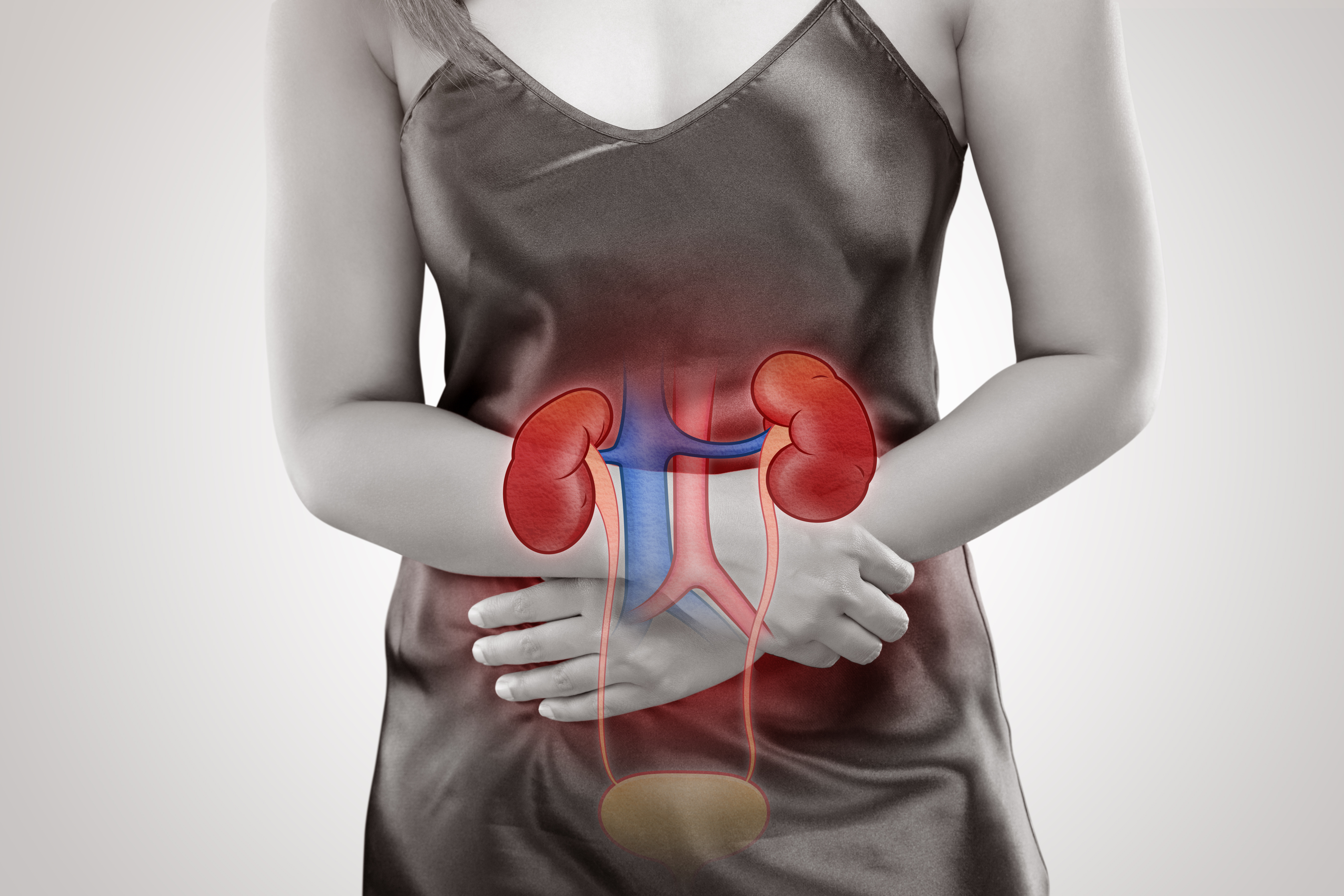 Since kidney failure can be life threatening, close monitoring of kidney function is necessary. All patients with scleroderma should monitor their blood pressure on a regular basis, since reduction in kidney function is often accompanied by a sudden increase in blood pressure. In addition, periodic blood testing of kidney functioning is important, especially in cases of recent onset diffuse scleroderma, rapidly progressing scleroderma, or patients with anti-RNA Polymerase III antibodies.
Since kidney failure can be life threatening, close monitoring of kidney function is necessary. All patients with scleroderma should monitor their blood pressure on a regular basis, since reduction in kidney function is often accompanied by a sudden increase in blood pressure. In addition, periodic blood testing of kidney functioning is important, especially in cases of recent onset diffuse scleroderma, rapidly progressing scleroderma, or patients with anti-RNA Polymerase III antibodies.
If detected early, treatments are usually very effective, which in part accounts for the significant improvement in scleroderma survival rates in recent decades. Current drugs of choice to treat kidney disease associated with scleroderma are ACE inhibitors, such as captopril (Capoten) or enalapril (Vasotec). The best success rates in treating scleroderma renal crisis occur by adjusting drug doses to achieve a gradual reduction of blood pressure until blood pressure returns to close to the normal range, as rapid decreases in blood pressure can result in increased kidney damage.
If kidney damage is not caught early, then dialysis and eventual kidney transplants may be the only remaining treatment options.
Other Symptoms / Issues
- Hypothyroidism – Hypothyroidism is readily treated by replacing the deficient thyroid hormone, using one of several oral medications. The preferred form is synthetic thyroid hormone, T4.
- Dryness of eyes and mouth – Many systemic scleroderma patients suffer from excessive dryness of the mouth and eyes (Sjogren’s Syndrome / Sicca Syndrome). Lubricating drops and ointments as well as artificial saliva products can relieve these symptoms. In addition to over-the-counter products, several prescription drugs are used to help control Sjogren’s symptoms, including: cyclosporine eye drops (Restatis), and pilocarpine hydrochloride (Salogen) or cevimeline (Exovac) to increase saliva flow. Good oral hygiene is important because gum disease is common in scleroderma resulting from this dryness problem. However, some patients with systemic scleroderma may have difficulty with maintaining good oral health because of extensive hand involvement that can make brushing and flossing difficult. Many dentists can provide adaptive devices and tools that can help, and frequent dental checkups are very important for scleroderma patients.
- Sexual dysfunction – Painful intercourse from skin tightness and decreased vaginal lubrication is common in women with systemic scleroderma. External lubrication can be helpful. Post-menopausal women should consult with their physicians about whether the use of prescription local estrogen releasing products such as creams, suppositories, or Estring are appropriate options to help with lubrication and vaginal dryness problems.Erectile dysfunction (ED) is very common in male patients with systemic sclerosis. PDE5 inhibitors such as sildenafil (Viagra), tadalafil (Cialis), and vardenafil (Levitra), that are commonly used to treat Raynaud’s symptoms in systemic scleroderma, are also often effective in treating systemic scleroderma related ED.
- Depression – Moderate to severe depression is common in systemic scleroderma, even beyond the expected incidence that is common with having a chronic, serious medical condition. Scleroderma related depression seems to respond well to standard medical treatments using medications such as Prozac, Wellbutrin, Zoloft, and Paxil.
As you can see, there is a multitude of Scleroderma symptoms and treatment options, which can quickly become complex and overwhelming. Finding a competent team of doctors, as well as self-education on your particular set of Scleroderma symptoms is a key component to helping diminish each respective symptom.
